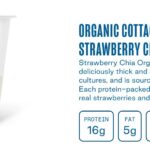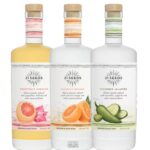How do consumers make decisions?
One concept that has gained significant traction recently is Category Entry Points (CEPs). This robust framework, developed by the Ehrenberg-Bass Institute, offers marketers a fresh perspective on consumer behavior and brand growth.
What are CEPs, why do they matter, and how can you leverage them to drive your brand’s success?
What are Category Entry Points?
Category Entry Points are the specific need states, occasions, or triggers that prompt consumers to choose a product or service within a particular category. These are the moments when a category comes to mind, leading to a purchase decision. CEPs are not about brand choice; they’re about category choice.
For example, in the beverage category, CEPs might include:
– Needing hydration after exercise
– Wanting a drink to pair with a meal
– Seeking a caffeine boost in the morning
Understanding CEPs shifts our focus from why consumers choose a specific brand to why they enter the category in the first place. This perspective can dramatically alter how we approach marketing and brand building.
Why CEPs Matter
1. Mental Availability: CEPs help increase a brand’s mental availability by ensuring it is present in consumers’ minds in various relevant situations.
2. Broader Reach: By identifying multiple CEPs, brands can expand their relevance and reach a wider audience.
3. Competitive Advantage: Brands that dominate key CEPs can gain a significant edge over competitors.
4. Innovation Opportunities: CEPs can reveal unmet needs or underserved occasions, inspiring product innovation.
5. Effective Messaging: Understanding CEPs allows for more targeted and relevant marketing communications.
How to Identify and Leverage CEPs
1. Consumer Research: Conduct qualitative and quantitative research to understand when and why consumers enter your category.
2. Behavior Analysis: Study purchase patterns and consumption occasions to identify common triggers.
3. Competitor Assessment: Analyze how competitors position themselves relative to various CEPs.
4. Opportunity Mapping: Identify underserved or emerging CEPs your brand could own.
5. Strategy Alignment: Ensure your product development, marketing, and sales strategies align with key CEPs.
Examples of CEPs in Action
1. Snickers: Hunger as a CEP
Snickers brilliantly capitalized on hunger as a key CEP for the snack category with its long-running “You’re Not You When You’re Hungry” campaign. (Don’t you miss Betty White?)
By positioning itself as the go-to solution for hunger-induced mood changes, Snickers expanded its relevance beyond traditional candy bar occasions. This approach helped Snickers dominate the “hunger satisfaction” CEP within the snack category.
The campaign’s success lies in making Snickers top-of-mind whenever someone feels hungry and irritable, effectively owning this category entry point.
2. Airbnb: Authentic Travel Experiences as a CEP
Airbnb disrupted the travel accommodation industry by focusing on a CEP that traditional hotels weren’t serving well: the desire for authentic, local experiences.
By positioning itself to “live like a local” rather than find a place to sleep, Airbnb tapped into a powerful CEP for travelers seeking unique, immersive experiences.
This approach helped Airbnb create and dominate a new subcategory within travel accommodations. Their marketing consistently reinforces this CEP, showcasing unique properties and local experiences that go beyond traditional hotel offerings.
3. Spotify: Mood-Based Music Selection as a CEP
Spotify recognized that people often choose to listen to music based on their current mood or activity – a key CEP for the music streaming category.
They leveraged this insight to create mood-based playlists and their famous “Discover Weekly” feature, which suggests music based on listening habits and preferences.
By focusing on this CEP, Spotify positioned itself as more than just a music library; it became a mood enhancer and personal DJ. Their marketing often highlights how Spotify can provide the perfect soundtrack for any moment, reinforcing their ownership of this CEP.
Developing Your Brand’s Unique CEP
While identifying and targeting existing CEPs is crucial, developing a unique CEP for your brand can be a game-changer. Here’s how:
1. Identify Unmet Needs: Look for gaps in the current market where consumer needs aren’t being fully met.
2. Innovate: Develop products or services that address these unmet needs in novel ways.
3. Create New Occasions: Sometimes, introducing new usage occasions for your product can create entirely new category entry points.
4. Educate Consumers: Use marketing to teach consumers about this new CEP and how your brand uniquely serves it.
5. Consistency: Reinforce your unique CEP across all touchpoints to build strong associations in consumers’ minds.
Key Learnings:
Category Entry Points offer a robust framework for understanding consumer behavior and driving brand growth.
By shifting focus from brand choice to category choice, marketers can uncover new opportunities, enhance relevance, and create stronger connections with consumers.
Remember, the goal is not just to be the chosen brand when a consumer enters a category but to be the reason they enter the category in the first place.
By mastering CEPs, you can position your brand at the forefront of consumers’ minds, ready to meet their needs before realizing they have them. As you develop your marketing strategies, consider how you can identify, target, and even create Category Entry Points. This approach can lead to more effective campaigns, increased mental availability, and sustainable brand growth in an increasingly competitive marketplace.
Connect with Jeff at The Marketing Sage Consultancy. Interested in setting up a call with me? Use my calendly to schedule a time to talk. The call is free, and we can discuss your brand and marketing needs. If you want to learn more about my new offering, The Trusted Advisor Board, you can click here to learn the details. Feel free to email me at jeffslater@themarketing sage.com or text 919 720 0995. Thanks for your interest in working with The Marketing Sage Consultancy.

Photo by Tim Mossholder on Unsplash
Video courtesy of Snickers and the late great Betty White




